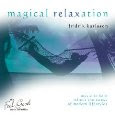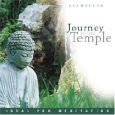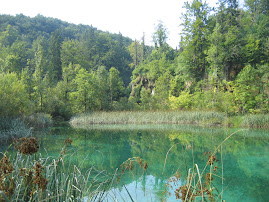Chakras are the body's energy centres. Traditionally there are seven, as depicted by the picture below.
Each chakra is associated with a particular region of the body - in my anatomy and physiology lectures, it was suggested that chakras corresponded with the body's endocrine system. This idea is also referenced in many text books, and was something my teachers in the College of Psychic Studies Accredited Healing Course also discussed.

Reiki practitioners, energetic healers and other holistic therapists use chakras as "listening points" when working with clients, and can determine by the way the energy centre feels, if anything it is out of balance. This guides the therapist as to where to focus the healing.
According to Wikipedia, the main concepts related to each chakra are:
Sahasrara or the crown chakra is generally considered to be the chakra of consciousness. Its role may be envisioned somewhat similarly to that of the pituitary gland, which secretes hormones to communicate to the rest of the endocrine system and also connects to the central nervous system via the hypothalamus. The thalamus is thought to have a key role in the physical basis of consciousness. Symbolised by a lotus with nine hundred seventy-two petals, it is located above the head outside the body.
Ajna (along with Bindu, either or both are considered to correspond to the third eye) is linked to the pineal gland which may inform a model of its envisioning. Ajna is held as the chakra of time, awareness and of light. The pineal gland is a light sensitive gland that produces the hormone melatonin which regulates sleep and awakening. Symbolised by a lotus with two petals.
Vishuddha (also Vishuddhi) or the throat chakra may be envisioned as relating to communication and growth, growth being a form of expression. This chakra is paralleled to the thyroid, a gland that is also in the throat and which produces thyroid hormone, responsible for growth and maturation. Symbolised by a lotus with sixteen petals.
Anahata or the heart chakra is related to complex emotion, compassion, love, equilibrium and well-being. It is related to the thymus, located in the chest. The thymus is an element of the immune system as well as being part of the endocrine system. It produces T cells responsible for fending off disease and may be adversely affected by stress. Symbolised by a lotus with twelve petals.
Manipura or the solar plexus chakra is related to the transition from simple or base to complex emotion, energy, assimilation and digestion, and is held to correspond to the roles played by the pancreas and the outer adrenal glands, the adrenal cortex. These play a valuable role in digestion, the conversion of food matter into energy for the body. Symbolised by a lotus with ten petals.
Swadhisthana or the sacral chakra is located in the sacrum (hence the name) and is related to base emotion, sexuality and creativity. This chakra is considered to correspond to the testicles or the ovaries that produce the various sex hormones involved in the reproductive cycle which may cause dramatic mood swings. Symbolised by a lotus with six petals.
Muladhara or the base or root chakra is related to instinct, security, survival and also to basic human potentiality. This centre is located in the region between the genitals and the anus. Although no endocrine organ is placed here, it is said to relate to the inner adrenal glands, the adrenal medulla, responsible for the fight and flight response when survival is under threat. In this region is located a muscle that controls ejaculation in the sexual act in the human male. A parallel is charted between the sperm cell and the ovum where the genetic code lies coiled and the kundalini. Symbolised by a lotus with four petals.
Facebook has a nifty quiz that helps you to assess what your dominant chakra is - it's quick and easy to take, and like any of this stuff, you may or may not agree with the results. Apparently, mine is Anja. Here's what it had to say about the having a dominant Third Eye Chakra:
"Your dominant Chakra flows from between the eyes. You are a perceptive and intuitive individual. People whose dominant Chakra is Vishuddha are talented in the respect that their senses are more sensitive and acute than most other peoples'. They tend to see and hear things that others don't, and are gifted with vivid dreams. Ajna Chakra is associated with Aether (Energy), rather than a particular element."
Sooo....do I believe this? I guess with one of seven potential outcomes, the explanations are going to be pretty generalised - but when I got this result, it resonated with me. I do indeed have vivid dreams - not often, but certainly vivid; and I do tend to be able to see the big picture (who needs details!!).
It's a cool quiz. Check it out - and if you feel out of sorts, perhaps consider having your chakras rebalanced via Reiki or energetic healing.






















No comments:
Post a Comment